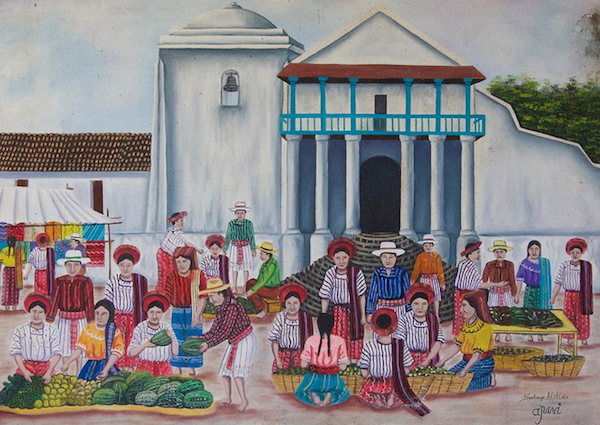
This is the first post in a two-part series focused on Indigenous community consultation best practices in the mining sector.
Following the release of its Position Statement on Indigenous Peoples and Mining in 2013, the International Council on Mining and Metals (ICMM) has recently released the second edition of its Good Practice Guide on Indigenous Peoples and Mining. The Guide is an excellent resource and toolkit for mining companies and others interested in developing mutually beneficial relationships between companies and indigenous communities.
This article presents a discussion of some of the aspects highlighted in the guidance as well as reflections based on practitioner experience.
Indigenous community consultation requires sensitivity to cultural practices, governance structures, and to the priorities of indigenous communities and their leadership. It is not uncommon for indigenous community leaders to indicate – openly or tacitly – that they will only engage with mining companies or others “in their own terms”. In practice, this often means that the agenda, location, timing, and format of consultation meetings will not necessarily be determined by the engagement or consultation practitioners working on behalf of a mining company.
This makes it imperative for members of consultation teams to be highly adaptable, and to be prepared for unplanned meeting formats and agendas when engaging with Indigenous Peoples.
Initial engagement
The type of contact established by company representatives in their first interactions with indigenous communities often sets the tone for the community-company relationship throughout the life of a project. It is therefore critical that company personnel and contractors be prepared to engage in a culturally-sensitive, respectful, and open manner with members of the indigenous community from early on.
Companies must not:
- enter community areas without first obtaining permission;
- fail to explain what they are doing in the area (e.g., exploration activities);
- fail to allow sufficient time for the community to consider a request; or
- disregard local customs.
Good engagement practice includes from the outset:
- agreement on how the community is to be engaged;
- understanding and respecting entry protocols before entering specific areas (e.g., traditional lands);
- open and transparent communication;
- conducting risk analysis/impact assessment, and developing appropriate mitigations, prior to entering community areas;
- briefing all company representatives, including contractors, on local customs and the need for cultural sensitivity; and
- monitoring of engagement performance.
Understanding the local context
It is important to gain an understanding of the local context as early as possible in the engagement process (early stages of a project).
Typically this will be achieved through the collection of baseline information, which may include information about: demographics; ethnic composition as well as tribal and clan relationships/identities; land ownership and tenure as well as land claims; location of sacred sites or other sites of cultural significance; local livelihoods, including sources of food as well as degree of participation in formal markets; and reports about the community’s relationship with local/national governments and extractive companies.
Baseline data must include input from indigenous community elders, as their knowledge has legitimacy and they are often in a position to provide historical information regarding indigenous migration, tribal relations, sacred or other culturally relevant sites, and use of natural resources.
Recognizing the leadership
In many indigenous communities, community leaders and elders are regarded as the only members of the community with the authority to engage in discussions about resource development projects with outsiders.
Furthermore, there tends to be an expectation that important discussions or negotiations will be conducted between the indigenous leadership and senior personnel of mining companies – i.e., high-level discussions and negotiations are to take place “from Chief to Chief”. When engaging with indigenous leadership, it is therefore important to involve senior company representatives with decision-making authority – particularly in the negotiation of agreements.
This will be seen as a sign of respect and acknowledgement of the indigenous community leadership. However, it should not be automatically assumed that the community leadership represents all interests in the community.
Involving community members
Appropriate consultation – particularly in the context of a social impact assessment (SIA) – should involve a variety of members of indigenous communities.
Care must be taken to ensure participation by women and vulnerable groups within the community. This should be done in a manner which is respectful of the indigenous community’s leadership and decision-making structures.
Inclusive and non-discriminatory engagement from the early stages is essential. The participation of various groups within the community can be achieved via focus groups, interviews, rapid surveys, and other information-gathering and consultation methods.
Engagement and project planning
Engagement between mining companies and Indigenous Peoples should ensure that companies understand the indigenous communities where they wish to operate, and that Indigenous Peoples understand their rights and are well informed about the range of environmental and social impacts (both positive and negative) of mining operations on their communities.
Companies are expected to address the potentially negative impacts of their activities. To the extent possible, companies must make use of traditional and other indigenous knowledge and take into account Indigenous Peoples aspirations and concerns in project design and in the development of impact mitigation measures.
It is also expected that companies will strive to achieve the ongoing support of indigenous community members and, where applicable, their free, prior and informed consent (FPIC).
Image credit: David Amsler under Creative Commons 2.0

Leave a Reply